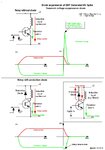ze-trinchas
Newbie level 6

Hi,
I have a question.
Can anyone explain me the reason they use the 4148 diodes in this circuit, both in the relay coil and in the input control circuit?
**broken link removed**
Best regards?
I have a question.
Can anyone explain me the reason they use the 4148 diodes in this circuit, both in the relay coil and in the input control circuit?
**broken link removed**
Best regards?




